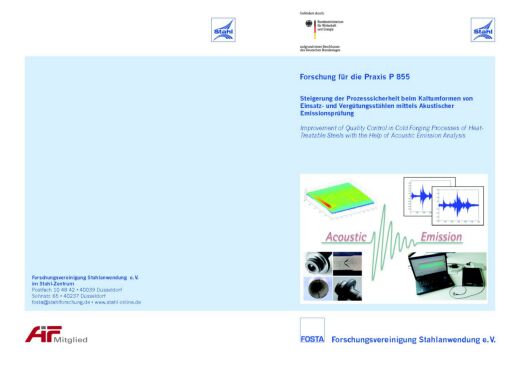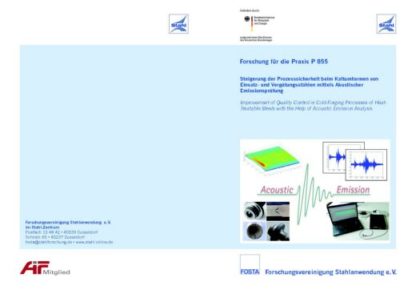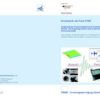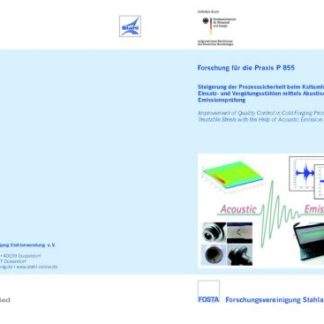Description
P 855 – Improvement of Quality Control in Cold Forming Processes of Heat-Treatable Steels with the Help of Acoustic Emission Analysis
Cold forging is particularly suitable for large-scale production of a wide range of parts with high quality standards. Generally steel materials are used, which are characterized by very high mechanical strength Gemeinand high-quality surface conditions after the cold forming process. Especially in the automotive industry, a great demand exists for metal forming components used for safety, reliability and durability applications. During the production phase of cold-formed components production failures can occur due to work piece damages which lead to economical losses. The used materials are often stressed to their maximum formability which results in crack due to the absent of heating of the work piece. At the same time, the higher flow stress of work piece materials in conjunction with increasing strain hardening depending on the deformation degree lead to an increased tool load and tool wear. The quality control of cold-formed components with respect to work piece damages caused by material failure is usually carried out after the manufacturing process due to the limited accessibility of the component. The subsequent inspection of the work piece often requires a very high temporal effort.
In this research project, a low-cost monitoring system for the online crack detection during cold forging of steel materials has been developed. The system is based on the acoustic emission technique (AE technique) and was validated and verified exemplarily by the detection of chevron cracks in industrial coldextruded components. The AE technology makes it possible to measure the resulting spontaneous release of energy in the form of elastic waves, which results from the component load during the forming process. Within a series of fundamental investigations, process influences (e. g. strain rate) on the AE signals were investigated and the general applicability of the method for the crack detection for various cold forging processes of steel materials was demonstrated. With the objective to provide a method of online monitoring of cold forging processes, the correlation between damage during the forming process and resulting measured acoustic emissions was examined. The design and dimensioning of the measurement chain as well as the identification of suitable acquisition parametersregarding the process boundary conditions were also carried out. The focus was on the reliable identification of crack development in the component during the forming process.
The research project (IGF-Nr. 16319 N) was carried out at Institut für Umformtechnik und Umformmaschinen der Leibniz Universität Hannover. FOSTA has accompanied the research project work and has organized the project funding from the Federal Ministry of Economics and Technology through the AiF as part of the programme for promoting industrial cooperation research (IGF) in accordance with a resolution of the lower house of the German parliament.
Only available in german language.
Authors:
B. A. Behrens, C. Buse
Published in:
2014




